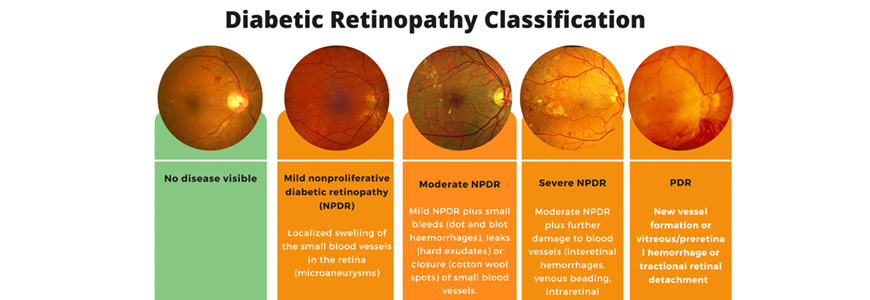Eye and Health Care Centre
Diabetic Retinopathy

Diabetic Retinopathy Diagnosis and Treatment: Understanding the Condition and Available Solutions
If you’re a diabetic, it’s crucial to monitor your eye health regularly. Diabetic retinopathy, a common eye condition caused by high blood sugar levels, can lead to blindness if left untreated. The good news is that early detection and timely intervention can help prevent permanent vision loss. In this article, we’ll discuss diabetic retinopathy diagnosis and treatment options available to you.
Diabetic Retinopathy Diagnosis and Treatment
Diabetic retinopathy occurs when high blood sugar levels damage the tiny blood vessels in the retina, leading to vision problems. If you have diabetes, you should undergo a comprehensive eye exam at least once a year to check for signs of retinopathy. Your doctor will perform a dilated eye exam to examine the retina for any abnormalities.
During the exam, your eye doctor may also perform the following tests to evaluate your eye health:
Visual Acuity Test
This test measures the sharpness of your vision. You’ll be asked to read letters from a chart, and your eye doctor will determine your visual acuity based on your ability to read the smallest letters on the chart.
Tonometry
Tonometry measures the pressure inside your eye. Your eye doctor will use an instrument called a tonometer to measure the pressure.
Optical Coherence Tomography (OCT)
Optical Coherence Tomography (OCT) is a non-invasive diagnostic imaging test that employs light waves to capture high-resolution images of the retina.. Your eye doctor will use these images to check for any abnormalities.
Fluorescein Angiography
This test involves injecting a dye into your arm, which travels to the blood vessels in your eye. Your eye doctor will use a special camera to take pictures of your retina as the dye moves through your blood vessels.
Available Treatments for Diabetic Retinopathy
If you’re diagnosed with diabetic retinopathy, there are several treatment options available to you. The treatment you receive will depend on the stage of your retinopathy and the severity of your symptoms. Here are some of the available treatments for diabetic retinopathy:
Laser Treatment
Laser treatment, also known as photocoagulation, is a common treatment for diabetic retinopathy. During the procedure, your eye doctor will use a laser to seal off the leaking blood vessels in your retina. This helps prevent further damage to the retina and can improve vision in some cases.
Vitrectomy
Vitrectomy is a surgical procedure that involves removing the vitreous gel from your eye. This procedure is typically performed in advanced cases of diabetic retinopathy, where the blood vessels have caused significant damage to the retina.
Anti-VEGF Injections
Anti-VEGF injections are a type of medication that is injected into your eye to help reduce swelling and leakage in the blood vessels. This treatment can help improve vision and prevent further damage to the retina.
FAQs about Diabetic Retinopathy Diagnosis and Treatment
1. Can diabetic retinopathy be prevented?
While there is no guaranteed way to prevent diabetic retinopathy, managing your blood sugar levels, blood pressure, and cholesterol can help reduce your risk.
2. How often should I undergo an eye exam if I have diabetes?
It’s recommended that you undergo a comprehensive eye exam at least once a year if you have diabetes.
3. Can diabetic retinopathy lead to blindness?
Yes, if left untreated, diabetic retinopathy can lead to blindness.
4. Is diabetic retinopathy reversible?
In the early stages, diabetic retinopathy can be managed with lifestyle changes and medications. However, in advanced cases, permanent damage may occur.
5. Are there any side effects of diabetic
Contact us today to schedule a consultation and experience the expertise and compassion of our specialized eye care team.
We are open on
Mon to Sat 12.00 PM to 3 PM ,5.30 PM to 8.30 PM ,Sun – 10.30 AM to 1.00 PM
Meet Our Optometrists
We Have Best Professional Team To Care Your Eyes and General Health



